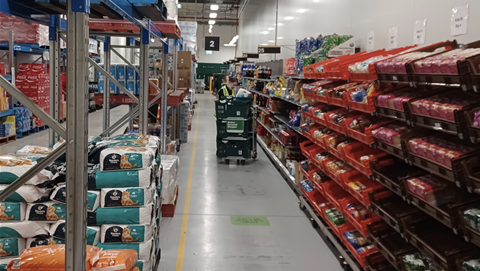Services Australia tapped its ‘voice of customer analytics’ program to understand and overcome blockages on online services and telephony platforms as demand for welfare services surged earlier this year.
With more than a million new customers flocking to Centrelink in the wake of Covid, CEO Rebecca Skinner on Thursday said the agency used this record demand to generate unprecedented insights from its systems.
“In the public sector, it’s easy to think about the scale of what we’re facing as a problem, but every start-up founder will tell you scale like this is the Holy Grail,” she told the Digital Transformation Agency's Digital Summit.
“Why? Because its scale that gives you data, and it’s that data that give you information and intelligence about the systems in action.”
In a bid to analyse online interaction data, Skinner said the agency turned to “a program called Tealeaf” to “track the customer pathways” on Centrelink’s online claims and services.
Tealeaf refers to Acoustic Experience Analytics (previously IBM Tealeaf), which Services Australia’s predecessor, the Department of Human Services, began trialling in the second half of 2018.
A spokesperson told iTnews after the software was trialled it was later “deployed across 42 Centrelink online claims and services”.
Skinner said the data was used to identify any “blockages or holdups” as customers were applying for the JobSeeker payment, so that the agency could “inspect it, rethink it [and] fix it”.
“Here’s a lot of people logging into myGov, navigating to Centrelink, starting a JobSeeker payment claim and stopping somewhere in the process before they hit submit,” she said.
“Have they moved to JobKeeper, or are they just stuck in the Bermuda Triangle called 'next steps'?”
Analytics was also employed on Services Australia’s telephony channels – which, like online services, copped a significant brunt of the demand – to fix issues or redeploy staff to areas of need.
“Our staff were talking over the phone to tens of thousands of people every day, and with speech analytics, that’s an asset, a bank of intelligence,” Skinner said.
“We could take the thousands of hours of audio and work out very quickly what people were finding difficult.”
Payment and performance data was similarly mined for insight, including by combining “data across multiple payments to focus on where people were doing it tough”, while a data heatmap was built.
“We started to build a data heatmap. Who’s accessing what and where. How is this changing? And do we have the capability in place to respond?” Skinner said.
“We could monitor all these things and report that information to government day-to-day. In future, we want to make it more minute-to-minute.
“And we won’t just get better at reacting to the headline figures. We’ll get better at assembling the puzzle, reading the patterns and predicting the next steps more quickly.”
‘Unexpected blessings’
During the surge in welfare applications that began in March, Services Australia – and other agencies across government – temporarily redeployed staff to answer phone calls and JobSeeker claims.
Skinner described this as “one of the unexpected blessings of Covid”, as “a lot of our IT development team” were able to use the customer systems they built and tested.
“Now they had to use the systems they built,” she said.
“And by systems, I mean systems plural - there are three of them that our customer facing staff have to grapple with, often simultaneously, all designed differently and using different words.
“It turns out that working in three separate systems while you’re trying to help people isn’t anyone’s idea of great design.
“Of course our IT people knew that, but perhaps what they didn’t expect is just how mentally draining it is to navigate these separate systems for an hour, two hours, four hours and then come back the next day and do it all again, checking first each day for the process and policy changes and systems patches that went through overnight.
“Moving to a single interface is a massive and ongoing project, but one where the bond of shared experience really counts."
Services Australia plans to roll out a single interface over the next two years as part of its welfare payments infrastructure transformation (WPIT) program.
Transformation projects deputy CEO Charles McHardie told senate estimates earlier this month that around “3500 screens’ used by staff to process claims would be replaced by a new SAP system.



.jpg&h=140&w=231&c=1&s=0)






















